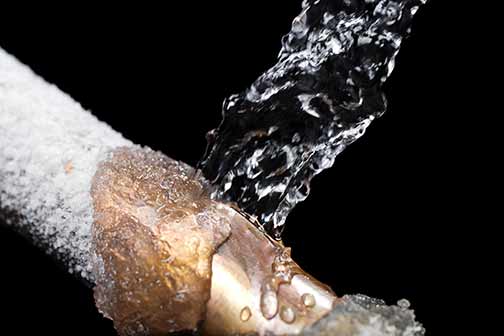Understanding the Risk Factors for Frozen Pipe Damage in Your Home
Frozen pipe damage is a common issue that can lead to significant repair costs and inconvenience. Understanding the risk factors that contribute to frozen pipes is the first step in protecting your home. Several factors can increase the likelihood of pipes freezing, including the climate in your area, the location of your pipes, and the insulation in your home.
Firstly, the climate plays a crucial role. Homes in regions with prolonged periods of sub-zero temperatures are at a higher risk. It is essential to be aware of the weather patterns in your area and take preventive measures accordingly. Secondly, the location of your pipes matters. Pipes located in unheated areas such as basements, attics, garages, and crawl spaces are more susceptible to freezing. Lastly, inadequate insulation can exacerbate the problem. Proper insulation around pipes, especially those in vulnerable areas, can significantly reduce the risk of freezing.
Implementing Protective Measures to Prevent Frozen Pipes in Your Home
Protecting your home from frozen pipe damage involves implementing several preventive measures. These measures can be broadly categorized into insulation, heating, and water flow management.
Insulation is one of the most effective ways to prevent pipes from freezing. Ensure that all exposed pipes are adequately insulated using pipe sleeves or heat tape. Pay special attention to pipes in unheated areas and those running along exterior walls. Additionally, insulating your home’s walls, attic, and basement can help maintain a consistent indoor temperature, reducing the likelihood of pipes freezing.
Heating is another critical aspect. Keep your home adequately heated, especially during cold spells. Set your thermostat to a consistent temperature, even when you are away from home. It is also advisable to open cabinet doors under sinks to allow warm air to circulate around the pipes. For pipes in unheated areas, consider using space heaters or heat lamps to provide additional warmth.
Water flow management can also help prevent frozen pipes. During extremely cold weather, allow a small trickle of water to flow through your faucets. This continuous flow can prevent water from freezing within the pipes. Additionally, make sure to disconnect and drain outdoor hoses and shut off the water supply to exterior faucets to prevent freezing.
Maintaining Your Plumbing System to Avoid Frozen Pipe Damage
Regular maintenance of your plumbing system is crucial in preventing frozen pipe damage. Conduct routine inspections to identify any potential issues and address them promptly. Look for signs of wear and tear, such as cracks, leaks, or corrosion, and repair or replace damaged burst pipes as needed.
Ensure that your home’s heating system is functioning correctly. Schedule annual maintenance for your furnace or boiler to keep it in optimal condition. Additionally, check that all vents and ducts are clear of obstructions to ensure proper airflow throughout your home.
It is also essential to maintain your home’s insulation. Inspect the insulation in your attic, basement, and walls regularly and replace or add insulation as needed. Proper insulation not only helps prevent frozen pipes but also improves your home’s overall energy efficiency.
Emergency Response to Frozen Pipe Incidents in Your Home
Despite taking preventive measures, frozen pipe incidents can still occur. Knowing how to respond in such emergencies can minimize damage and reduce repair costs. If you suspect that a pipe has frozen, act quickly to prevent it from bursting.
First, locate the frozen section of the pipe. Look for frost on the pipe’s surface or a lack of water flow from faucets. Once you have identified the frozen area, turn off the water supply to that section of the pipe to prevent it from bursting.
Next, thaw the frozen pipe using safe methods. Apply heat to the frozen section using a hairdryer, heat lamp, or electric heating pad. Never use an open flame or torch, as this can damage the pipe and pose a fire hazard. Start thawing from the faucet end and work your way towards the frozen section to allow melted water to escape. If all else fails, contact a plumber who can thaw frozen pipes professionally.
If you are unable to locate or thaw the frozen pipe, or if the pipe has already burst, contact an emergency plumber immediately. They have the expertise and tools to handle the situation safely and effectively.
Expert Recommendations for Long-Term Protection Against Frozen Pipe Damage
To ensure long-term protection against frozen pipe damage, follow expert recommendations and best practices. These guidelines can help you maintain a safe and efficient plumbing system, reducing the risk of frozen pipes.
Firstly, invest in high-quality insulation for your pipes and home. Proper insulation is a long-term solution that can prevent freezing and improve energy efficiency. Secondly, consider installing a smart thermostat that allows you to monitor and control your home’s temperature remotely. This can help you maintain a consistent indoor temperature, even when you are away.
Additionally, install frost-proof outdoor faucets and hose bibs. These fixtures are designed to prevent freezing and can be a valuable addition to your home’s plumbing system. Regularly check and maintain these fixtures to ensure they function correctly.
Lastly, educate yourself and your family about the signs of frozen pipes and the steps to take in an emergency. Being prepared and informed can make a significant difference in preventing and addressing frozen pipe incidents.
Conclusion: Ensuring the Safety of Your Home from Frozen Pipe Damage
Protecting your home from frozen pipe damage requires a combination of preventive measures, regular maintenance, and emergency preparedness. By understanding the risk factors, implementing protective measures, maintaining your plumbing system, and following expert recommendations, you can significantly reduce the likelihood of frozen pipes and the associated costs and inconvenience. Stay vigilant and proactive to keep your home safe and your plumbing system in optimal condition.


